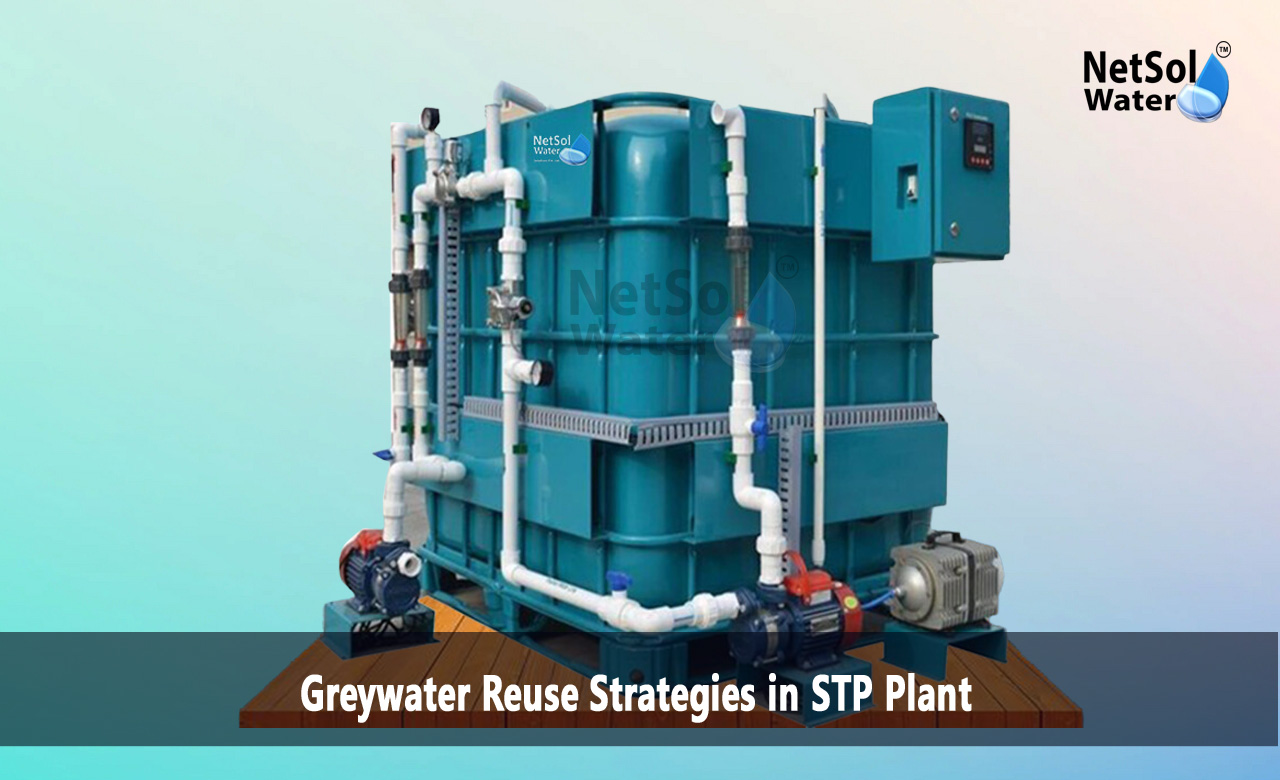Greywater Reuse Strategies in Sewage Treatment Plant
Greywater means water from showers, sinks and laundry. This water carries less risk than raw sewage but it still needs care and treatment before reuse. Implementing Greywater Reuse Strategies in STPs can reduce demand for fresh water, lower discharge to rivers and reduce treatment costs over time. Well planned reuse brings benefits for cities and rural areas. Operators can supply water for irrigation toilet flushing and some industrial tasks. Planners must match treatment quality to each reuse need. Good design separates greywater from blackwater and protects health and system function. Monitoring and simple controls keep water safe and systems stable. Choices about tanks filters biological units and disinfection affect cost and reliability. Policies and clear signage help avoid cross connections and keep public trust.
Design and Layout of STPs
Proper layout cuts costs and reduces risks. Let us have a look on some key layout elements and how they help plants meet reuse goals.
Sizing and Flow Paths
Designers must size tanks and pipes to match expected flow. They must separate greywater flows from blackwater flows early. This step saves energy and reduces treatment load. Engineers plan flow paths to avoid cross taps and to make maintenance easy.
Separation of Streams
Separation keeps greywater cleaner. Plants use separate drains for showers and sinks. They also use screens and grease traps to remove solids and fats. This step protects downstream filters and biological units and keeps performance steady.
Storage and Buffering
Storage holds water when reuse demand is low. Buffer tanks balance peaks and troughs in flow. Operators must fit tanks with safe access and with overflow paths. They must also provide simple disinfection before distribution to reduce risk.
Treatment Technologies for Greywater
The right technology gives safe water for each reuse need. Let us have a look on some common treatment options and how they work in practice.
Primary Treatment
Primary units remove large particles and settleable matter. Grids and screens protect later stages. Settling tanks reduce load on biological steps. This work makes sure that filters and reactors work longer without clogging.
Biological Treatment
Biological units break down organic matter. Fixed film beds and aerated tanks handle different loads. Plants choose simple moving bed biofilm reactors when space is tight. Operators watch oxygen levels and adjust aeration to keep bacteria active.
Advanced Treatment
Advanced steps polish water to higher standards. Sand filters membrane filters and UV disinfection make water safe for sensitive uses. Operators must balance cost and quality. Membranes can give high quality but they need cleaning and care.
Monitoring and Quality Control
Regular checks prevent health risks and system failures. Let us have a look on some monitoring practices and quality control measures that operators must apply.
Sensor Systems
Sensors track turbidity pH and residual disinfectant. They alert staff to changes fast. Plants use simple displays and alarms so staff can act without delay. Real time data keeps systems in range and cuts risk of supply interruption.
Sampling and Testing
Teams take samples at set points and test them in a lab. They check microbial indicators and chemical oxygen demand. Regular sampling confirms that treatment meets permit limits. Records also help staff spot trends and fix problems before they grow.
Maintenance Protocols
Routine cleaning, replacement of filters and valve checks keep systems healthy. Operators follow a clear schedule and log each task. A simple plan reduces failures and saves money on emergency repairs.
Reuse Applications and Distribution
Each reuse end use needs different water quality. Let us have a look on some common reuse uses and how plants supply them safely.
Irrigation and Landscaping
Irrigation tolerates moderate quality water. Plants deliver treated greywater through dedicated pipes to parks and gardens. Designers use drip lines and controlled dosing to avoid stand wetness on paths and play areas.
Toilet Flushing and Cooling
Toilet flushing needs higher quality than irrigation. Filters and disinfection make water safe for this use. Closed distribution loops and clear labelling keep potable and reuse lines apart and reduce cross connections.
Industrial Uses
Some industries accept greywater for cooling or process water. Treatment must match the needs of the machine or line. Plants work with industry staff to set standards and to keep supply steady.
Conclusion
Greywater Reuse Strategies in Sewage Treatment Plant offer a clear path to cut waste save money and protect water sources. Good design, sound treatment and steady monitoring make reuse work over the long term. Teams that plan reuse carefully achieve safe results and steady performance. If you want help to assess a plant or to build a reuse plan get in touch for more information or request a consultation today.
Contact Netsol Water at:
Phone: +91-9650608473, Email: enquiry@netsolwater.com



